Are you tired of thin and damaged hair after bleaching? Don’t worry, you’re not alone. Many people struggle with achieving thick and healthy hair after bleaching.
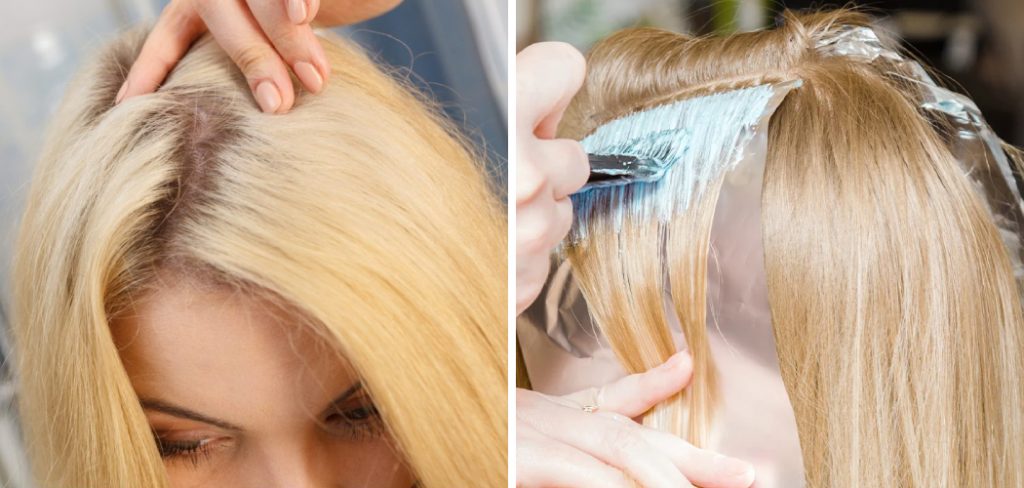
Bleaching can offer a dramatic and exciting change to your appearance, but it often comes at a cost to your hair’s health. The process can leave strands dry, brittle, and thinner than before due to the harsh chemicals stripping away natural oils and breaking down hair proteins. However, all is not lost if your locks lack their former luster and thickness post-bleaching.
This guide will provide you with essential steps and tips on how to get thick hair back after bleaching. From deep conditioning treatments to trimming and proper nutrition, getting your thick hair back is achievable with patience and consistent care.
What are the Causes of Thinning Hair after Bleaching?
Before diving into how to get thick hair back, understanding why your hair became thin in the first place after bleaching is essential. Here are some possible causes for post-bleach hair thinning:
- Chemical Damage: Bleaching uses harsh chemicals like ammonia and hydrogen peroxide to remove natural pigments from your hair shaft. These chemicals can break down hair proteins and cause severe damage to the hair’s structure, leading to thinning and breakage.
- Lack of Moisture: The bleaching process strips away natural oils and moisture from your hair, leaving it dry and brittle. This lack of moisture makes it challenging for your strands to retain their thickness and strength.
- Over-processing: Bleaching hair repeatedly can lead to over-processing, where the chemicals continue to strip away layers of the hair shaft, making it thinner and weaker.
Now that you know some possible causes of thinning hair after bleaching, let’s explore how to get thick hair back.
What Will You Need?
Before we dive into the steps, here are a few tools and products you will need to achieve thicker hair:
- Protein-rich hair products
- Moisturizing hair products
- Hair trimmer or scissors
- A wide-tooth comb
- Heat protectant spray

Once you have these essentials, you are ready to start your journey to restoring thick hair after bleaching.
10 Easy Steps on How to Get Thick Hair Back After Bleaching
Step 1: Deep Conditioning Treatments
Deep conditioning treatments are your hair’s best friend post-bleaching. Look for conditioners rich in proteins and moisturizing ingredients. These treatments help to repair the damage caused by bleach by penetrating deep into the hair shaft to nourish and strengthen each strand from the inside out.
Aim to apply a deep conditioning treatment at least once a week for the best results. Leave the treatment in your hair for a minimum of 30 minutes; for even deeper conditioning, consider leaving it on overnight, covered with a shower cap. This will improve your hair’s texture and elasticity and contribute significantly to regaining its thickness and health.
Step 2: Trim Regularly to Remove Split Ends
Regular trims are crucial when trying to regain the thickness of your hair after bleaching. Split ends can travel up the hair shaft if left untreated, causing more damage and making your hair appear thinner. Trimming your hair every 6-8 weeks will help prevent split ends from worsening and encourage healthier hair growth.
You don’t need to cut off a significant length; just a slight trim will do to keep your ends fresh and prevent further breakage. Regular trims ensure that your hair grows back stronger and healthier and appears thicker over time.
Step 3: Avoid Heat Styling Tools
Minimizing heat styling tools is another crucial step in regaining your hair’s thickness after bleaching. High temperatures from blow dryers, straighteners, and curling irons can exacerbate hair damage, leading to breakage and thinning. If you must use these tools, apply a heat protectant spray beforehand to create a protective barrier over your hair.
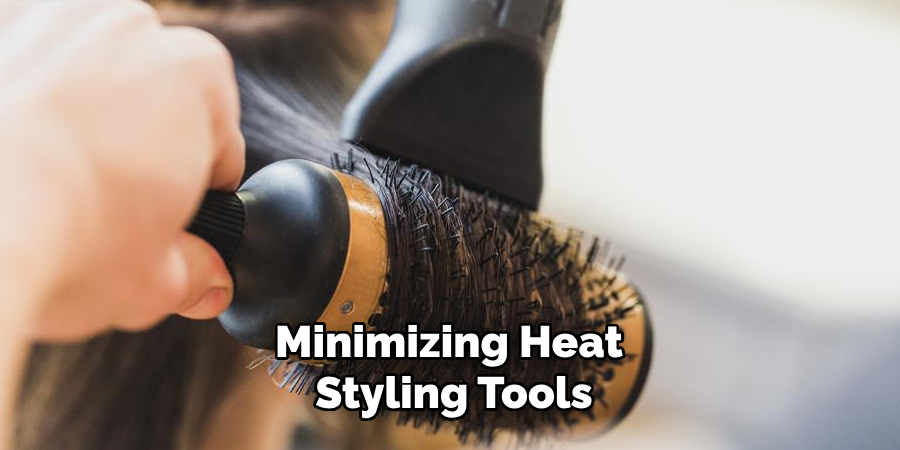
Alternatively, explore heatless styling methods that are gentler on your locks. Allowing your hair to air-dry and adopting styles that don’t rely on heat can significantly improve its condition and help in achieving that desired thickness.
Step 4: Use Protein Treatments
Protein treatments are essential for restoring the strength of bleached hair. These treatments help fill in the gaps and tears in the hair’s cuticle layer, resulting from bleaching. By incorporating protein treatments into your hair care routine, you can gradually reconstruct your hair’s damaged fibers, leading to healthier and, consequently, thicker hair.
It’s essential to follow the product’s instructions carefully, as overusing protein treatments can make your hair brittle. Typically, using a protein treatment once a month is sufficient for most hair types. This step is crucial for those looking to repair and thicken their bleached hair effectively.
Step 5: Upgrade Your Diet
Improving your diet is a foundational step in getting thick hair back after bleaching. Hair growth and health are significantly influenced by the nutrients you consume. A balanced diet rich in vitamins, minerals, and proteins can foster healthier hair growth. Look for foods high in vitamins A, C, D, and E, iron, zinc, and omega-3 fatty acids.
These nutrients help to promote scalp health, enhance hair growth, and improve hair thickness. Salmon, eggs, nuts, spinach, and sweet potatoes are excellent examples of hair-healthy foods. Remember, a healthier body equates to healthier hair, so prioritizing your nutrition can profoundly impact regaining your hair’s thickness post-bleaching.
Step 6: Limit Chemical Treatments
To regain the thickness and health of your hair after bleaching, limiting further chemical treatments is vital. Repeated coloring, perming, or chemical straightening procedures can weaken your hair structure even more, preventing the recovery of its thickness.
If you wish to change your hair color or texture, consider using temporary, less-harmful alternatives that don’t require harsh chemicals. Giving your hair a break from chemical treatments allows it to recuperate and rebuild the strength needed to support thicker, healthier growth. Patience is key; the less stress you put on your hair, the better it can recover from previous damage.
Step 7: Minimize Exposure to Sun and Pollution
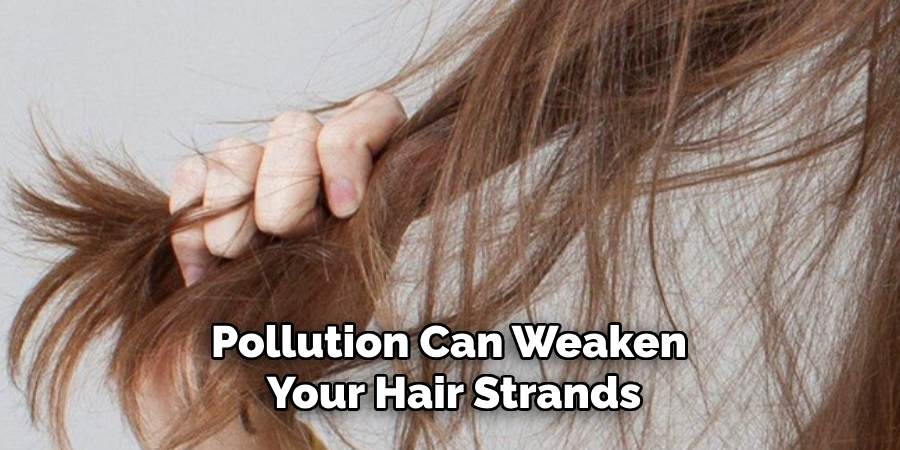
The environment plays a significant role in the health of your hair. Excessive exposure to the sun’s UV rays and pollution can weaken your hair strands, leading to further thinning and damage. Protecting your hair from these elements is essential for regaining its thickness post-bleaching.
When spending time outdoors, consider wearing a hat or applying a hair product that contains UV protection. Additionally, using a hair serum or oil can create a barrier against pollutants. This step not only helps prevent new damage but also supports your hair’s recovery and thickening process.
Step 8: Stay Hydrated
Maintaining adequate hydration is crucial for overall health, including the health of your hair. Water helps to keep your hair hydrated from the inside out, promoting a healthy scalp and leading to stronger, thicker hair growth. Aim to drink at least 8 glasses of water a day.
This not only benefits your hair but also improves skin health and the functioning of your body as a whole. Hydration supports the elimination of toxins that can hinder hair growth and enables nutrients to circulate more effectively to your hair follicles. A well-hydrated body is the foundation for regaining the thickness and vitality of your bleached hair.
Step 9: Gentle Hair Handling
The way you handle your hair can significantly affect its health and thickness. Avoid tight hairstyles that pull on your hair roots, such as high ponytails, braids, or buns, as they can lead to hair breakage and loss. Instead, opt for looser styles that reduce tension on your hair follicles. Also, be gentle when brushing or combing your hair, especially when it’s wet since it’s more prone to breaking.
Use a wide-tooth comb or a brush with soft bristles to detangle your hair gently. Adopting a more cautious approach to hair handling can prevent unnecessary breakage and aid in regaining thickness and strength in your bleached hair.
Step 10: Regular Deep Conditioning Treatments
Regular deep conditioning treatments are pivotal in nurturing your hair back to its full thickness after bleaching. Deep conditioners are designed to penetrate deeper into the hair shaft, providing intense hydration and repairing damage from within.
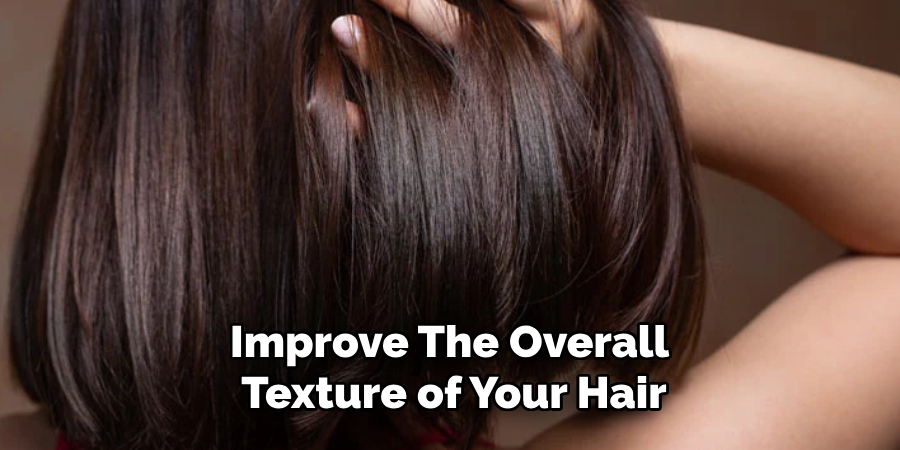
These treatments can help restore elasticity, prevent breakage, and improve the overall texture of your hair, making it appear thicker and healthier. Aim to use a deep conditioning treatment at least once a week, focusing on the mid-lengths and ends of your hair where damage is most prevalent. Over time, this consistent care regimen will significantly contribute to the recovery and enhancement of your hair’s natural volume and strength.
By following these 10 steps, you can effectively regain the thickness of your bleached hair and achieve a healthy, luscious mane.
5 Additional Tips and Tricks
- Trim Regularly: Keeping your hair trimmed will help eliminate split ends and prevent further breakage. Even a slight trim can promote hair health and thickness.
- Deep Conditioning Treatments: Invest in high-quality deep conditioners for damaged or bleached hair. These treatments can help restore moisture and elasticity to your hair.
- Scalp Massage: Regular scalp massages can stimulate circulation and promote hair growth. Use natural oils like coconut or argan oil for an added nourishment boost.
- Reduce Heat Styling: High temperatures from hair dryers, straighteners, or curling irons can cause additional damage to bleached hair. Try to air-dry your hair and use heat-protectant products when styling is necessary.
- Healthy Diet: Hair health starts from the inside. Ensure your diet is rich in vitamins and minerals like iron, zinc, Vitamin E, and proteins crucial for hair regeneration and thickness.
Once you have bleached your hair, it is important to take extra care and follow specific tips to maintain its health and prevent damage.
5 Things You Should Avoid
- Avoid Frequent Washes: Washing your hair too often can strip it of its natural oils, leading to dryness and brittleness. Limit shampooing to two or three times a week and use sulfate-free products whenever possible.
- Stay Away from Chlorinated Water: Swimming pools can further damage bleached hair due to chlorine and other harsh chemicals. If swimming is unavoidable, ensure you wear a protective cap and rinse your hair with clean water afterward.
- Do Not Brush Wet Hair: Wet hair is more elastic and prone to breakage, so avoid brushing or combing directly after a shower. Instead, use a wide-tooth comb to gently detangle your hair, starting from the ends and working your way up.
- Limit Tight Hairstyles: Tight ponytails, braids, or buns can cause stress and breakage to weakened hair. Opt for loose, comfortable styles that don’t pull on your hair or scalp.
- Avoid Harsh Chemical Treatments: Additional chemical processes, such as perm or hair color, can further damage and weaken your hair. It’s best to give your hair time to recover and avoid any treatments that involve harsh chemicals for as long as possible.
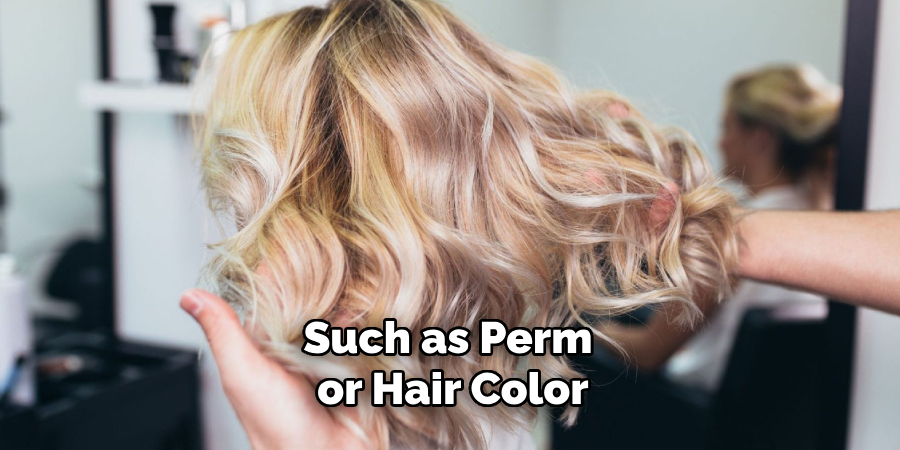
By avoiding these common hair care mistakes, you can help maintain the health and strength of your bleached hair.
What are the Disadvantages of Bleaching Your Hair?
Bleaching your hair comes with its set of disadvantages, including:
- Dryness and Damage: The bleaching process strips your hair of natural oils, leaving it dry, brittle, and more prone to breakage.
- Hair Fall: Bleach weakens hair strands, causing increased hair loss or thinning.
- Scalp Irritation: Some people may experience scalp irritation, redness, or burning sensations due to the harsh chemicals in bleach.
- Uneven Results: Achieving a consistent and even color can be challenging, especially if you have dark or previously dyed hair. Uneven bleaching can result in a patchy and unattractive color.
- Maintenance and Upkeep: Bleached hair requires more maintenance and frequent touch-ups to maintain the desired color. This can be time-consuming and costly.
It’s essential to weigh the pros and cons before bleaching your hair, as it is a significant commitment that requires proper care and upkeep. Consulting with a professional hairstylist can also help you make an informed decision and minimize potential risks. Overall, bleaching your hair can be a fun and exciting way to change up your look, but it’s essential to approach it with caution and proper aftercare.
How to Remove Bleach From Hair?
If you decide that bleached hair is not for you and want to remove it, there are a few options available:
- Wait for Natural Hair Growth: The most natural way to remove bleach from your hair is to wait for it to grow out. This method can take several months, but it allows your hair to recover and avoid further damage.
- Use a Color Remover: Color removers are designed to strip hair color without causing damage. However, they can be harsh and may not work on all hair types.
- Try a Clarifying Shampoo: Using a clarifying shampoo can help fade the bleach and lighten your hair over time. These shampoos have potent cleansing agents that can strip away color, so follow up with a deep conditioning treatment.
- Visit a Professional: If you are not confident in removing the bleach, it’s best to visit a professional hairstylist. They can assess your hair and use specialized treatments to safely remove the bleach without causing too much damage.
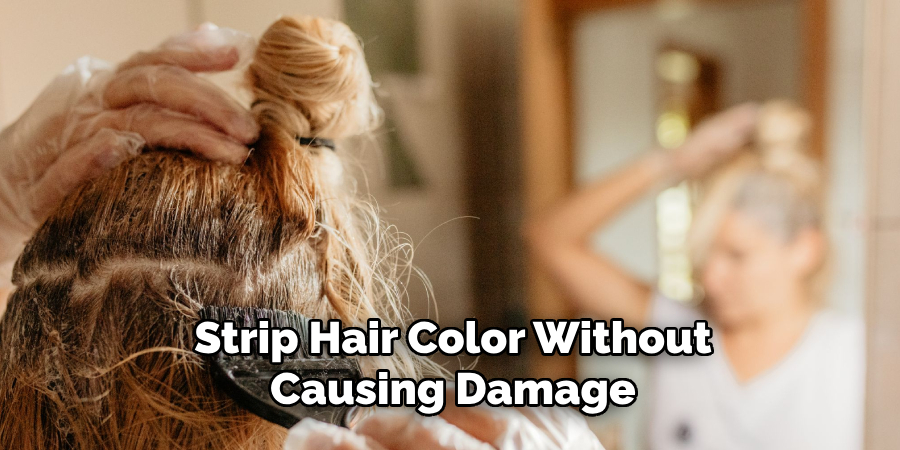
It’s essential to remember that removing bleached hair is a gradual process, and it may take multiple treatments to achieve the desired result. Be patient and gentle with your hair during this time to avoid further damage. Ultimately, removing bleach from your hair is a personal choice, so make sure to consider all factors before deciding on the best method for you.
What Foods Thicken Hair?
Eating a well-balanced diet rich in essential vitamins and minerals is crucial for maintaining healthy and thick hair. Some foods that can help thicken your hair include:
- Salmon: This fatty fish is an excellent source of omega-3 fatty acids, which promote hair growth and thickness.
- Eggs: Eggs are loaded with protein, biotin, and other essential nutrients that contribute to hair growth and strength.
- Spinach: Spinach is rich in iron, which helps transport oxygen to your hair follicles, promoting healthy growth.
- Avocado: Avocados are packed with Vitamin E, which helps protect and repair damaged hair.
- Sweet Potatoes: These root vegetables are high in beta-carotene, which the body converts to Vitamin A. This vitamin is crucial for cell growth and helps produce sebum, which keeps hair healthy and hydrated.

In addition to these foods, it’s essential to stay hydrated by drinking plenty of water throughout the day. Dehydration can lead to dry and brittle hair, so keep your body well-hydrated for healthy and thick locks. Incorporating these foods into your diet can also improve the overall health of your hair, making it more resilient to damage from bleaching and other chemical processes.
Conclusion
To recover thick and healthy hair after bleaching, adopting a holistic approach that includes proper hair care, a nutritious diet, and avoiding further damage is crucial. Start by minimizing heat styling and harsh chemical treatments, and opt for gentle and moisturizing hair care products designed for damaged or bleached hair. Regular trims can also help eliminate split ends and promote healthier hair growth.
Additionally, incorporating foods rich in proteins, vitamins, and omega-3 fatty acids into your diet can give your hair the necessary nutrients to regain its thickness and strength. Remember, patience and consistency are essential as your hair recovers from bleaching.
Hopefully, this guide has given you a better understanding of how to get thick hair back after bleaching. By following these tips, you can enjoy your new bleached look while keeping your hair strong and luscious. So go ahead and rock that bold and bright hair color with confidence! Happy bleaching!
About the Author
Jane Hubbard is a passionate beauty expert with a wealth of experience in makeup, hair, and overall beauty techniques. After years of working as a hairdresser specialist, she followed her entrepreneurial spirit and started her own consultancy business.
Jane has always been driven by her desire to help others feel confident in their own skin, and she does this by sharing her knowledge, experiences, and practical beauty tips. Through her consultancy, she empowers individuals to embrace their unique beauty, offering tailored guidance that boosts both self-esteem and personal style.
Professional Focus
- Specializes in makeup, hairstyling, and beauty consulting.
- Provides personalized beauty advice, tips, and techniques to help individuals feel confident in their appearance.
- Dedicated to staying up-to-date with the latest industry trends and developments.
- Passionate about creating a comfortable and empowering experience for every client.
Education History
- University of Craft and Design – Bachelor of Fine Arts (BFA) in Woodworking and Furniture Design
- Woodworking Apprenticeships – Extensive hands-on training with skilled craftsmen to refine carpentry and furniture making techniques
- Online Courses & Masterclasses – Continued education in advanced woodworking techniques, design principles, and specialized tools
Expertise:
- Makeup artistry, hairstyling, and beauty consulting.
- Personalized beauty techniques to enhance confidence and self-expression.
- Educating clients on how to maintain their beauty routines at home.
